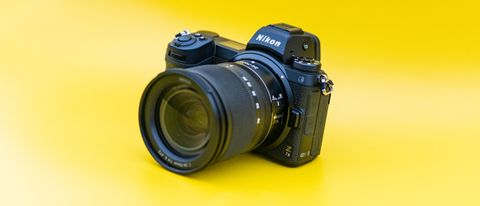The Nikon Z7 II is the follow up to Nikon’s first full-frame mirrorless camera, the Z7, a camera that was launched back in the summer of 2018. With a 45.7-megapixel full-frame sensor at its heart, the Z7 II is Nikon’s flagship mirrorless camera and created to take on the likes of Canon’s EOS R5 and Sony Alpha A7R IV, while also designed to tempt the company’s existing DSLR owners to make the switch.
Sitting alongside the Z7 II is Nikon’s more enthusiast-orientated full-frame mirrorless camera, the 24.5-megapixel Nikon Z6 II. Costing significantly less than the pro-orientated Z7 II, the Z6 II is marketed as more of an all-rounder.
We’re big fans of the original Nikon Z7 and as the name suggests, Nikon hasn’t started from the ground up with the Z7 II. Instead the company has listened to feedback and looked to iron-out the weaknesses of the original, tweaking and refining to arrive at the Z7 II. Externally at least the only giveaway that you’re dealing with the newer camera is the new Nikon Z 7II badge. However, with the mirrorless landscape changing in the last two years with a selection of new rivals, do the changes made to the Z7 II offer enough to put it ahead of the competition?
Specifications
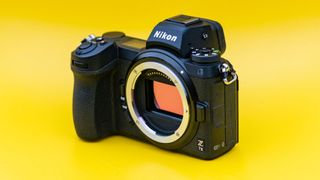
Sensor: 45.7MP full frame CMOS, 35.9 x 23.9mm
Image processor: Dual-core EXPEED 6
AF points: 493-point hybrid phase/contrast AF
ISO range: 64 to 25,600 (exp. 32-102,400)
Video: Uncropped 4K UHD up to 30p, cropped 4K UHD up to 60p
Viewfinder: 3690k-dot OLED EVF, 100% coverage, 0.8x magnification
Memory card: 1x SD UHS-II, 1x CFexpress (Type B) / XQD
LCD: 3.2-inch tilting touchscreen, 2,100K dots
Max burst: 10fps mechanical shutter
Connectivity: Wi-Fi 2.4GHz and 5GHz, Bluetooth 4.2, USB-C, mini HDMI, GPS, microphone, headphone
Size: 134 x 100.5 x 69.5mm
Weight: 615g body only (705g with battery)
Key features
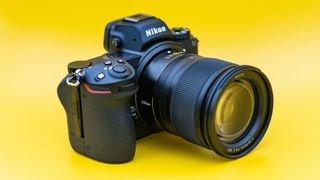
Nikon’s opted to use the same 45.7-megapixel full-frame back-illuminated sensor that was seen in the Z7, but rather than the single EXPEED 6 processor that was featured in the older model, the Z7 II now has the luxury of dual EXPEED 6 processors. Doubling the processing power brings with it a number of improvements, including the burst shooting speed increasing from 9fps to 10fps. You do need to read the small print though as this speed is only achievable if you’re shooting 12-bit raw files and using a single AF point. The extra processing power delivers a much deeper shooting buffer, with the Z7 II now having up to 3.3x the buffer capacity of the original model.
The Z7 II’s video offering has also been enhanced, with the new camera now capable of shooting 60p 4K footage. This is up from 30p on the Z7, but this higher frame rate sees a slight 1.08x crop applied to the footage to achieve this, with the Z7 II using 93% of the width of the sensor. If you’re planning to send footage to an external recorder then the Z7 II can output ready-to-view Hybrid Log Gamma (HLG) footage for viewing on HDR TV sets, while the Z7 II’s ‘hot charging’ USB-C support means you’ll be able to power the camera while its in use, allowing you shoot as long as you want.
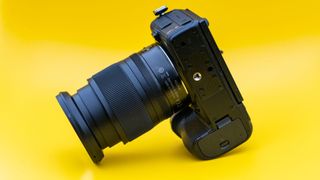
Speaking of power, the Z7 II gets a new, uprated battery. While the Z7’s battery life was officially rated at an underwhelming 330 shots, the Z7 II uses a higher capacity version of the battery, with the new EN-EL15c now able to deliver 420 shots per charge with the LCD, and 360 shots through the viewfinder. It's a welcome improvement, but it still lags behind rivals like Sony’s A7R IV that can muster up to 670 shots on a charge.
One area that was often singled out with the original Z7 was its reliance on a single XQD card slot, but the Z7 II now benefits from dual card slots with the welcome addition of a UHS-II SD card slot that sits alongs the XQD/CFexpress Type B socket.
Rather than developing a new AF system, the Z7 II utilizes the same 493-point AF system that was enjoyed by the Z7, but the extra EXPEED 6 processor has allowed Nikon to make some improvements here as well. As well as sharpening up the overall performance of autofocus, the Z7 II now includes human or animal eye/face detection in Wide area AF modes and improved focusing in low light that sees the Z7 II now able to focus down to -3EV (compared to the Z7’s -2EV).
Elsewhere though, the specification of the Z7 II remains identical to the Z7.
See also Nikon Z7 II vs Z7
Build and handling
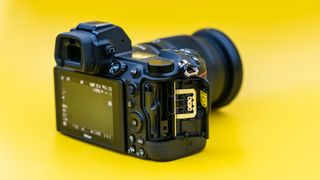
Despite the extra card slot the design of the Z7 II is identical to the Z7 (and the Z6 and Z6 II for that matter, while the much more affordable Nikon Z5 is very similar too), and apart from the Z7 II badge, the only other difference is it's a couple of millimetres thicker and a gram or two heavier.
While sticking with an unchanged design might appear to be playing it incredibly safe, the original Z7 was a pretty well sorted camera when it came to handling, so it’s perhaps no bad thing that Nikon’s felt no need to tinker here. The deep grip makes the Z7 II incredibly comfortable to hold and the control layout makes it one of the most satisfying mirrorless cameras to shoot with. Key controls fall to the hand easily, while it’s nice to see face / eye detection is now accessed along with all the other area AF modes. A dedicated drive mode would be nice to see on the Z7 II (perhaps round the collar of the mode dial?), but this is relatively straightforward to get to via the menu.

Just like the Z7, the Nikon Z7 II enjoys magnesium alloy top, front and back covers to deliver ample rigidity, and is weather-sealed to Nikon’s professional specifications. This all combines to deliver a camera that’s very well made and one that can happily be used in a number of environments.
One area that we’d like to have seen Nikon overhaul is the EVF and rear display. While the 3.69m-dot EVF in the original Z7 impressed at the time, it’s since be overshadowed by 5.76m-dot EVFs in key rivals and its disappointing not to see Nikon equip the Z7 II with something similar. As it is, it uses the same 3.69m-dot EVF as its predecessor and while it’s very good, it’s not a match for the more higher resolution EVFs on the competition like the Canon EOS R5 and Sony Alpha A7R IV.
Another curiosity is the fact that Nikon’s stuck with the tilting rear touchscreen LCD. While this method has a range of uses and applications, a vari-angle mechanism would have made it a more appealing proposition for videographers and portrait shooters.
Performance



Even though the Z7 II is now able to max out at 10fps, that still leaves it lagging behind the likes of the Canon EOS R5, that can shoot at up to 12fps with its mechanical shutter, and 20fps if you elect to use the electronic shutter. That said, it’s identical in speed to the A7R IV, though that is handling large 60-megapixel files. While that sort of puts it behind its rivals (especially when it’s limited to single point AF), 10fps might still be enough for most disciplines.
The 493-point hybrid AF system inside the Z7 II is a very solid performer. Using both phase and contrast-detect AF the Z7 II finds focus very quickly, while as we found with the Z6 II, human / animal face and eye detect modes work very well. Train the Z7 II on your subject and even against the busy backgrounds and it’ll lock-on and automatically switch between faces or individual eyes. Predictive focus tracking is also good on the Z7 II, enabling you to maintain focus on your subject as it moves round the frame. Viewed in isolation and the AF system on the Z7 II is very impressive, but against the likes of the EOS R5’s incredibly sophisticated AF, it’s not quite there. Nikon users shooting action are probably still best served by the company’s D850 and D6 DSLRs – while they can’t match the 90% coverage of the Z II, their advanced tracking AF certainly has the edge.


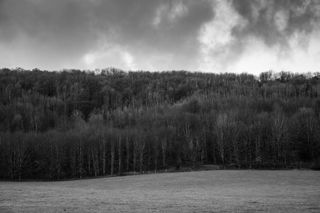
There are no nasty surprises when it comes to image quality, having seen variations of this sensor used in both the Z7 and D850. The level of detail achievable is impressive, while the wide dynamic range means there’s plenty of flexibility in the raw files. It’s possible to recover good amounts of shadow detail, while the Z7 II’s Matrix metering does a good job of aiming to preserve the highlights.
The lab results weren't quite what we were expecting, as the Z7 II appears slightly down against some older rivals in noise and dynamic range. Real world results were very impressive, however, so we will re-test the Z7 II again when we have another sample, just to make sure.
The Z7 II’s in-body image stabilization (IBIS) is a strong performer, delivering 5-stops of compensation. This means that shooting at slow shutter speeds and still coming away with a sharp shot is very much a reality when shooting with the Z7 II. It’s not just a benefit for stills though as it can be harnessed when shooting video as well. Provided you keep movement down to a minimum where possible, you can come away with some incredibly smooth 4K footage.
Lab charts
We compared the lab results from the Nikon Z7 II against those from three key high-resolution, full frame mirrorless rivals: the Canon EOS R5, Panasonic Lumix S1R and Sony A7R IV.
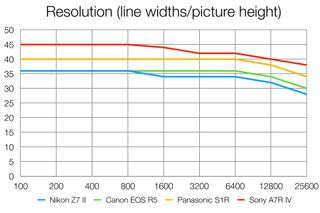
Resolution
Resolution is measured using standardised text charts which give results in line widths/picture height, which is independent of sensor size. Not surprisingly, the 60MP Sony A7R wins for resolution, with a clear advantage over the rest. The Panasonic Lumix S1R is in second place, clearly making the best use of its sensor, which has the same or similar resolution to the Canon EOS R5 and Nikon Z7 II, which are roughly equal in third place. To put this in perspective, though, both the Canon and the Nikon easily out-resolve any APS-C camera and indeed any 24-megapixel full frame model.
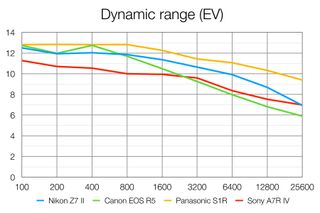
Dynamic range
Dynamic range is a measure of a camera's ability to record extreme brightness ranges and still retain detail in the brightest and darkest parts of the scene. It's measured in EV (exposure values, or 'stops'). In this test the Panasonic is out in front, producing measurably higher dynamic range across the ISO range. The Nikon Z7 II and Canon EOS R5 are close together in second place and the Sony A7R IV trails in a surprising fourth – in our tests we were not able to replicate the dynamic range claimed by Sony for this camera's sensor.
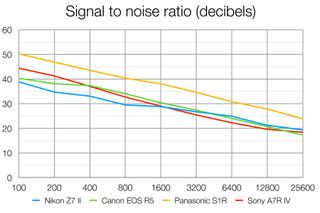
Signal to noise ratio
This compares the amount of random noise generated by the camera at different ISO settings as a proportion of the actual image information (the 'signal'). Higher values are better and we expect to see the signal to ratio fall as the ISO is increased. The winner here is the Panasonic, again, with the Sony A7R IV and Canon EOS R5 close together in second place. The Nikon Z7 II trails a disappointing third here, though in real world shooting the differences are harder to spot.
Verdict

All the changes that we’ve seen on the Z7 II are certainly welcome, but we can’t help feeling that Nikon’s played it a bit safe. We’d like to have seen even more of a jump to really make it a serious threat to the likes of the Canon EOS R5 and Alpha A7R IV. In all likelihood Nikon is holding this tech back for an all-new model and with no disrespect to the Z7 II, it feels a little like a stopgap.
That said, the Nikon Z7 II has a lot going for it. Costing significantly less than its rivals, you can overlook some of its shortcomings, while the build, handling and image quality are all excellent. It might not have a standout feature that sets it apart from its competitors, but the Nikon Z7 II delivers solidly across the board and is a great mirrorless camera.
Read more:
• Nikon Z6 II vs Z7 II
• Best Nikon camera
• Best Nikon Z lenses
• Nikon mirrorless cameras
• Best professional cameras
• Best mirrorless cameras
